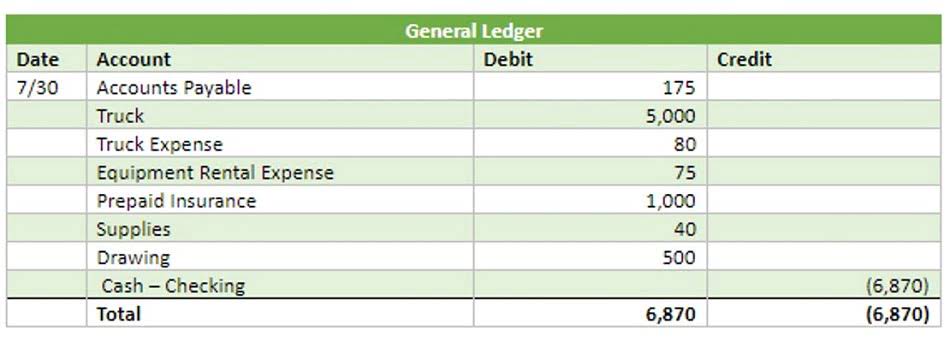
If you use double-entry accounting, you also record the amount of money customers owe you. The allowance account reduces the net accounts receivable on the balance sheet, providing a more realistic view of the company’s assets. Adjusting entries at year-end update the allowance account to reflect the most accurate estimate of uncollectible receivables, ensuring the financial statements are accurate. The allowance for doubtful accounts is a company’s educated guess about how much customers owe that will never come in. It appears on the balance sheet as a contra-asset, directly reducing the accounts receivable (AR) balance to contra asset account show a more conservative, realistic value of expected collections.
Bad Debt Expense and Allowance for Doubtful Account

The allowance represents management’s best estimate of the amount of accounts receivable that will not be paid by customers. It does not necessarily reflect subsequent actual experience, which could differ markedly from expectations. If actual experience differs, then management adjusts its estimation methodology to bring the reserve Bookkeeping for Etsy Sellers more into alignment with actual results.
- Understanding how to calculate and apply ADA helps businesses make informed decisions about their accounts receivable and avoid unexpected financial losses.
- Accumulated depreciation is considered a contra asset because it contains the cumulative total of all depreciation expense recognized on an asset to date.
- Accumulated Depreciation is a contra asset account utilized to record the total depreciation of a fixed asset over time.
- To reverse the account, debit your Accounts Receivable account and credit your Allowance for Doubtful Accounts for the amount paid.
- Thus, the account Allowance for Doubtful Account must have a credit balance of $10,000.
- Businesses should regularly analyze their historical bad debt trends and compare them to industry standards to determine an appropriate allowance percentage.
What is the process of managing contra asset accounts in QuickBooks?

Using blockchain and cloud technology, we pioneered Payments-as-a-Service to digitize and automate your entire cash lifecycle. Our software makes it possible to digitize receivables, automate processing, reduce time-to-cash, eliminate transaction fees, and enable new revenue. Bad debt expense is determined by applying different loss rates to outstanding accounts based on aging categories and summing the estimated uncollectible amounts. Regular review and adjustment ensure that the allowance account reflects current conditions and provides the most accurate financial information. The Allowance for Doubtful Accounts is a contra-asset account on the balance sheet that represents the amount of receivables a company does not expect to collect. You should review the balance in the allowance for doubtful accounts as part of the month-end closing process, to ensure that the balance is reasonable in comparison to the latest bad debt forecast.

Assessing Valuation Allowances
This method estimates doubtful accounts as a percentage of total sales, based on historical data. In accounting, achieving accuracy and clarity is essential, and one key concept that helps with this is the contra account. While the term may sound technical, a contra account is simply a tool that enhances financial reporting by offering a clearer, more detailed view of a company’s financial QuickBooks health. For example, if a company has a revenue account for sales returns and allowances, they would also have a contra revenue account to offset the balance in the sales returns and allowances account.
- The allowance for doubtful accounts is management’s objective estimate of their company’s receivables that are unlikely to be paid by customers.
- This targeted approach can provide greater accuracy for businesses with clearly defined customer segments that have different payment behaviors.
- On the income statement, the provision for doubtful accounts is recorded as an expense, reducing the net income for the period.
- Automation further enhances the efficiency of managing doubtful accounts by streamlining processes such as data collection, receivables monitoring, and report generation.
- As you can tell, there are a few moving parts when it comes to allowance for doubtful accounts journal entries.
- Their management requires precise bookkeeping practices to ensure financial statements reflect an entity’s true financial position.
- Analyzing these seasonal trends allows companies to anticipate and prepare for potential cash flow challenges, ensuring they maintain sufficient liquidity during peak times of bad debt occurrences.

Although you don’t physically have the cash when a customer purchases goods on credit, you need to record the transaction. In the financial statements the asset a/c would be offset against the contra asset a/c to show the net balance. Paystand is on a mission to create a more open financial system, starting with B2B payments.
- In conclusion, the allowance for doubtful accounts is essential for maintaining accurate and reliable financial records.
- Treasury stock is a contra equity account that is used to offset the balance of the common stock account.
- So, based on accrual accounting, we need to pass an entry stating that there can be bad debts shortly.
- Let’s assume that a company has a debit balance in Accounts Receivable of $120,500 as a result of having sold goods on credit.
- Conversely, the allowance method provides a more consistent and realistic measure by adjusting for anticipated losses.
- Nevertheless, auditors look closely at changes in methodology and whether they’re justified by actual collection experience.